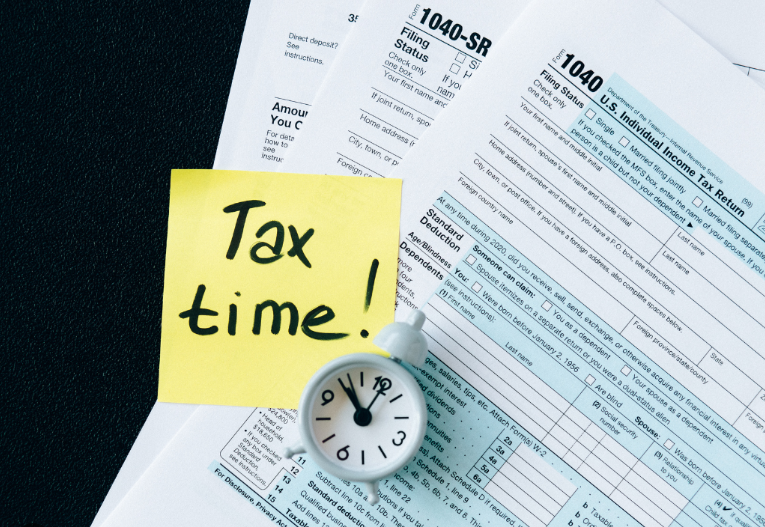Tax Deductions For Rental Property Owners

Navigating tax season as a self-employed individual or freelancer can sometimes feel like wandering through the wilderness. However, understanding these tax deductions can provide a sense of relief while strengthening your business.
Although exploring these incentives is crucial, it’s worth noting that tax laws undergo constant changes. To ensure you’re making the most of deductible claims, consider consulting with a financial advisor or tax professional.
Mortgage Interest
One of the largest deductions available to landlords is the interest on their mortgage loan. While you can’t deduct the portion of your payment that goes toward the principal loan amount, you can deduct the interest charges. These amounts are clearly outlined on your monthly statements and can be easily calculated by multiplying the monthly interest amount by 12 to find your total annual interest.
Maintenance Repairs
As a landlord, you understand the importance of promptly addressing maintenance and repair needs for your rental property. These expenses, including labor costs, can add up quickly when outsourcing to professionals. Fortunately, you can deduct these expenses, provided they are aimed at restoring the property to its original condition rather than enhancing its market value.
If you have the skills to handle repairs yourself, you’re already saving on labor costs. While you can’t deduct the value of your own labor, you can claim rental fees for any tools or equipment you borrow to complete the repairs.
Property Taxes

Property tax laws and rates vary by state, so it’s wise to consult with a tax professional regarding available deductions in your area. However, if your property is subject to rental licensing requirements, occupancy tax, or sales tax, you can deduct these fees.
The IRS imposes a limit on the deduction of state and local income, sales, and property taxes, capping it at $10,000 (or $5,000 for married couples filing separately). However, this limit doesn’t apply to business-related ventures. Therefore, if you’re excelling in the rental property business, you may be able to claim the full amount of these taxes as a business expense.
Utilities
Landlords often devise various utility payment arrangements with tenants, and some of these arrangements can be claimed on your tax return, especially if you’re covering the utility bills. Expenses for a tenant’s gas, water, electricity, heating, air conditioning, cable, and internet can be tax-deductible if you opt to pay for them. Even if there’s an agreement for tenants to reimburse the landlord for utility costs later on, you can still deduct the utilities and include the reimbursement as part of your income.
Insurance And Depreciation
Several incentives target insurance and depreciation in rental properties. Any insurance premiums paid, such as those for theft, fire, flood, and landlord liability insurance, can typically be deducted.
Additionally, a portion of the rental property’s cost can be claimed for depreciation. This deduction is usually spread out over several years, based on the expected lifespan of the structure. Despite the IRS guideline stating that rental properties can depreciate over 27.5 years, you can technically claim depreciation even before your first tenants move in!
Professional Fees
Similar to deducting repair expenses, various fees for outsourced guidance can be claimed as well. Whether it’s legal advice, real estate agent commissions for tenant searches, or fees for financial advisors and advertisers, most professional fees aiding in rental business operations are deductible.
Office Space

You can claim the square footage of your office, provided it’s dedicated solely to managing your rental property business. Whether it’s a separate commercial space or a corner in your home, owned or rented, it qualifies. Additionally, any technology or equipment aiding your landlord duties, including relevant software, is deductible. Remember to keep receipts for stationery, electronics, and furniture purchased for this purpose.
What Kind Of Landlord Are You?
Your eligibility for various deductions hinges on your level of involvement. The IRS categorizes landlords along a spectrum from “passive activity” to “real estate professional.” Between these extremes are “active participation” and “material participation.” Your classification is based on the level of effort you invest in managing your rental property, influencing the tax treatment of your income and losses.
Income And Losses

In the predominantly passive real estate sector, meeting the criteria to be recognized as a real estate professional demands significant commitment:
- You must dedicate over half of your total working hours to your rental business.
- Your yearly tally should exceed 750 hours actively engaged in managing your real estate rental property.
All efforts related to property management, development, acquisition, and construction contribute to meeting these benchmarks. Achieving real estate professional status results in your revenue being classified as “active income” by the IRS. This designation permits you to offset losses against other income and bypass a 3.8% net investment tax.
Record Every Expense
Regardless of your IRS classification, meticulous record-keeping of your activities and expenditures can lead to more favorable tax treatment. Utilize appointment books, calendars, and receipts to substantiate your active involvement.
These tax deductions are tailored to support the growth of rental property enterprises. Consult with your tax advisor to ensure you’re maximizing every permissible deduction!



